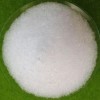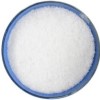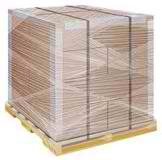Potassium Iodide & Potassium Iodate USP IP BP Ph Eur ACS Reagent FCC Food Grade Manufacturers |
Muby chemicals, is the flagship company in Mubychem Group, established in 1976, It has several manufacturing units in its wings, making Inorganic Chemicals including Potassium Iodide and Potassium Iodate Pharmaceutical Excipients & Flavour Chemicals in India. Mubychem Group has manufacturing facilities spread across Western India and sales purchase agents in several countries. The associated manufacturing units are accredited with certifications like FDA cGMP and GLP Approval, ISO-9001 ISO-14001, ISO/IEC 17025, ISO-22000, FSSC 22000, ISO 45001, Certification, "REACH" registration, Kosher, Halal & HACCP Certification. |
| We are chemical supplier exporter to almost every country and have a representatives in major business areas. We serve from small packs to container loads. |
CAS Number 7681-11-0
Potassium iodide is white salt and it is the most commercially significant iodide compound.
Specifications of Potassium Iodide:
| Particulars | Specifications |
| Appearance | WHITE POWDER |
| Assay | NLT 99.0% KI |
| Insoluble Matter | NMT 0.005% |
| Loss on drying | NMT 0.2% AT 150DEGC |
| pH of 5% solution | 6.0 TO 9.2 AT 25DEGC |
| Chlorides & Bromides | NMT 0.01% (AS CL) |
| Iodate (IO3) | NMT 3 PPM |
| Phosphate (PO4) | NMT 0.001% |
| Sulfate (SO4) | NMT 0.005% |
| Barium (Ba) | NMT 0.002% |
| Heavy Metals (Pb) | NMT 5 PPM |
| Iron (Fe) | NMT 3 PPM |
| Calcium (Ca) | NMT 0.002% |
| Magnesium (Mg) | NMT 0.001% |
| Sodium (Na) | NMT 0.005% |
Potassium iodide is a precursor to silver iodide (AgI) an important chemical in photography. KI is a component in some disinfectants and hair treatment chemicals. KI is also used as a fluorescence quenching agent in biomedical research.
The major uses of KI include use as a nutritional supplement in animal feeds and also the human diet. For the latter, it is the most common additive used to "iodize" table salt (a public health measure to prevent iodine deficiency in populations which get little seafood). The oxidation of iodide causes slow loss of iodine content from iodized salts that are exposed to excess air. Potassium iodide is also used in several pharmaceutical preparations and for protection against nuclear radiation.
Potassium Iodide USP
KI -- 166.00
Potassium iodide -- [CAS 7681-11-0]
Potassium Iodide contains not less than 99.0 percent and not more than 101.5 percent of KI, calculated on the dried basis.
Identification— A solution of it meets the requirements of the tests for Potassium and for Iodide.
Alkalinity— Dissolve 1.0 g in 10 mL of water, and add 0.1 mL of 0.1 N sulfuric acid and 1 drop of phenolphthalein TS: no color is produced.
Loss on drying— Dry it at 105C for 4 hours: it loses not more than 1.0% of its weight.
Iodate— Dissolve 1.1 g in sufficient ammonia- and carbon dioxide-free water to obtain 10 mL of solution, and transfer to a color-comparison tube. Add 1 mL of starch TS and 0.25 mL of 1.0 N sulfuric acid, mix, and compare the color with that of a control containing, in a similar volume, 100 mg of Potassium Iodide, 1 mL of standard iodate solution [prepare by diluting 1 mL of potassium iodate solution (1 in 2500) with water to 100 mL], 1 mL of starch TS, and 0.25 mL of 1.0 N sulfuric acid. Any color produced in the solution of the test specimen does not exceed that in the control: not more than 4 µg per g is found.
Limit of nitrate, nitrite, and ammonia— To a solution of 1 g in 5 mL of water contained in a test tube of about 40-mL capacity add 5 mL of 1 N sodium hydroxide and about 200 mg of aluminum wire. Insert a pledget of purified cotton in the upper portion of the test tube, and place a piece of moistened red litmus paper over the mouth of the tube. Heat the test tube and its contents in a steam bath for 15 minutes: no blue coloration of the paper is discernible.
Thiosulfate and barium— Dissolve 0.5 g in 10 mL of ammonia- and carbon dioxide-free water, and add 2 drops of 2 N sulfuric acid: no turbidity develops within 1 minute.
Heavy metals— Dissolve 2.0 g in 25 mL of water: the limit is 0.001%.
Potassium Iodide BP Ph Eur Grade Specifications
KI -- 166.0 -- CAS 7681-11-0
Content: 99.0 per cent to 100.5 per cent (dried substance).
CHARACTERS
Appearance: White or almost white powder or colourless crystals.
Solubility: Very soluble in water, freely soluble in glycerol, soluble in ethanol (96 per cent).
IDENTIFICATION
A. Solution S (see Tests) gives the reactions of iodides (2.3.1).
B. Solution S gives the reactions of potassium (2.3.1).
TESTS
Solution S: Dissolve 10.0 g in carbon dioxide-free water R prepared from distilled water R and dilute to 100 ml with the same solvent.
Appearance of solution: Solution S is clear and colourless.
Alkalinity: To 12.5 ml of solution S add 0.1 ml of bromothymol blue solution R1. Not more than 0.5 ml of 0.01 M hydrochloric acid is required to change the colour of the indicator.
Iodates: To 10 ml of solution S add 0.25 ml of iodide-free starch solution R and 0.2 ml of dilute sulphuric acid R and allow to stand protected from light for 2 min. No blue colour develops.
Sulphates: Maximum 150 ppm.
Dilute 10 ml of solution S to 15 ml with distilled water R.
Thiosulphates: To 10 ml of solution S add 0.1 ml of starch solution R and 0.1 ml of 0.005 M iodine. A blue colour is produced.
Iron: Maximum 20 ppm.
Dilute 5 ml of solution S to 10 ml with water R.
Heavy metals: Maximum 10 ppm.
12 ml of solution S complies with test A. Prepare the reference solution using lead standard solution (1 ppm Pb) R.
Loss on drying: Maximum 1.0 per cent, determined on 1.00 g of previously powdered substance by drying in an oven at 105C for 3 h.
POTASSIUM IODIDE IP Grade Specifications
KI -- Molecular Weight 166.00
Category: Antithyroid; antifungal; expectorant.
Description: Colourless crystals or white powder; odourless
Solubility: Very soluble in water; freely soluble in glycerin; soluble in ethanol (95%).
STANDARDS
Potassium Iodide contains not less than 99.0 per cent and not more than 100.5 per cent of KI, calculated with reference to the dried substance.
Identification: A 10% w/v solution in carbon dioxide-free water (solution A) gives the reactions of potassium salts and of iodides.
Alkalinity: To 10 ml of solution A add 0.2 ml of 0.01M sulphuric acid; no colour is produced on addition of a drop of phenolphthalein solution.
Clarity and colour of solution: Solution A is clear and colourless.
Arsenic: Dissolve 5.0 g in 50 ml of 'water and 12 ml of stannated hydrochloric acid AsT. The resulting solution complies with the limit test for arsenic (2 ppm).
Heavy metals: Not more than 10 ppm, determined on 2.0 g
Iron: Solution A complies with the limit lest for iron (20 ppm).
Barium: Dissolve 0.5 g in 10 ml of water and add 1 ml of dilute sulphuric acid; no turbidity develops within one minute.
Potassium Iodide FCC Food Grade Specifications
KI Formula weight 166.00
CAS 7681-11-0
DESCRIPTION
Potassium Iodide occurs as hexahedral crystals, either transparent and colorless or somewhat opaque and white, or as a white, granular powder. It is stable in dry air but slightly hygroscopic in moist air. One gram is soluble in 0.7 mL of water at 25°, in 0.5 mL of boiling water, in 2 mL of glycerin, and in 22 mL of alcohol.
Function: Nutrient.
REQUIREMENTS
Identification:
A. A 1:10 aqueous solution responds to the tests for Potassium and for Iodide.
B. The pH of a 1:20 aqueous solution is between 6 and 10.
Assay: Not less than 99.0% and not more than 101.5% of KI after drying.
Iodate: Not more than 4 mg/kg.
Lead: Not more than 4 mg/kg.
Loss on Drying: Not more than 1%.
Nitrate, Nitrite, and Ammonia: Passes test.
Thiosulfate and Barium: Passes test.
Potassium Iodide Analytical Reagent Grade Specifications
KI -- Formula Weight 166.00
CAS Number 7681-11-0
REQUIREMENTS
Assay: Minimum 99.0% KI
pH of a 5% solution: 6.0-9.2 at 25C
MAXIMUM ALLOWABLE
Insoluble matter: 0.005%
Loss on drying at 150C: 0.2%
Chloride and bromide (as Cl): 0.01%
Iodate (IO3): 3 ppm
Nitrogen compounds (as N): 0.001%
Phosphate (PO4): 0.001%
Sulfate (SO4): 0.005%
Barium (Ba): 0.002%
Heavy metals (as Pb): 5 ppm
Iron (Fe): 3 ppm
Calcium (Ca): 0.002%
Magnesium (Mg): 0.001%
Sodium (Na): 0.005%.
Potassium Iodate BP Ph Eur Grade Specifications
KIO3 -- 214.0 -- CAS 7758-05-6
DEFINITION
Potassium Iodate contains not less than 99.0% and not more than 101.0% of KIO3, calculated with reference to the dried substance.
CHARACTERISTICS
A white crystalline powder.
Slowly soluble in water; insoluble in ethanol (96%).
Dissolve 10 g of the substance being examined in sufficient water to produce 200 ml (solution S1).
Add 25 ml of hydrochloric acid to 6 g of the substance being examined, evaporate to dryness and repeat. Heat until iodine is removed. Dissolve the residue in 2.5 ml of a 25% v/v solution of hydrochloric acid and dilute to 50 ml with water (solution S2).
IDENTIFICATION
A. 1 ml of solution S1 yields reaction B characteristic of potassium salts.
B. Dissolve 0.1 g in 5 ml of water. Add 1 ml of silver nitrate solution followed by 1 ml of sulphur dioxide solution. A yellow precipitate is produced immediately.
TESTS
Acidity or alkalinity: pH of solution S1, 5.0 to 8.0.
Clarity and colour of solution: Solution S1 is clear and colourless.
Chloride, chlorate, bromide, bromate: Dilute 5 ml of solution S1 to 15 ml with water, add 20 ml of sulphur dioxide solution and heat on a water bath for 30 minutes. Heat to boiling, cool, add 10 ml of 18M ammonia and 20 ml of silver nitrate solution R2 and dilute to 70 ml with water. Filter, transfer 35 ml of the filtrate to a Nessler cylinder and acidify with 6 ml of nitric acid . After 5 minutes, any opalescence, when viewed vertically, is not greater than that produced by treating 5 ml of a 0.00165% w/v solution of sodium chloride at the same time and in the same manner (0.02%).
Iodide: Add 1 ml of 1.8M sulphuric acid to 25 ml of solution S1 and shake with 1 ml of chloroform. Any violet colour produced is not more intense than that of a solution prepared at the same time and in the same manner but using 5 ml of solution S1 and 2 ml of iodide standard solution (10 ppm I) (20 ppm).
Sulphate: Add 1 ml of a 25% w/v solution of barium chloride to 1.5 ml of sulphate standard solution (10 ppm SO4), shake and allow to stand for 1 minute. Add 12.5 ml of solution S2 diluted to 15 ml with distilled water and 0.5 ml of 5M acetic acid and allow to stand for 5 minutes. Any opalescence produced is not more intense than that of a standard prepared in the same manner but using 7.5 ml of sulphate standard solution (10 ppm SO4) diluted to 15 ml with distilled water in place of the solution being examined (50 ppm).
Heavy metals: Adjust the pH of 20 ml of solution S2 to about 5 with 5M ammonia. The solution complies with limit test A for heavy metals, Appendix VII. Use 10 ml of lead standard solution (2 ppm Pb) to prepare the standard (20 ppm).
Loss on drying: When dried at 130° for 1 hour, loses not more than 0.5% of its weight. Use 1 g.
Potassium Iodate FCC Food Grade Specifications
KIO3 -- Formula wt 214.00
CAS 7758-05-6
DESCRIPTION
Potassium Iodate occurs as a white, crystalline powder. One gram dissolves in about 15 mL of water. It is insoluble in alcohol. The pH of a 1:20 aqueous solution is between 5 and 8.
Function: Maturing agent; oxidizing agent; dough conditioner.
REQUIREMENTS
Identification: Add 1 drop of starch TS and a few drops of 20% hypophosphorous acid to 1 mL of a 1:10 aqueous solution. A transient blue color appears.
Assay: Not less than 99.0% and not more than 101.0% of KIO3 after drying.
Chlorate: Passes test (limit about 0.01%).
Iodide: Passes test (limit about 0.002%).
Lead: Not more than 4 mg/kg.
Loss on Drying: Not more than 0.5%.
Potassium Iodate Analytical Reagent Grade Specifications
KIO3 -- Formula Weight 214.00 -- CAS Number 7758-05-6
REQUIREMENTS
Assay: 99.4-100.4% KIO3
pH of a 5% solution: 5.0-8.0 at 25C
MAXIMUM ALLOWABLE
Insoluble matter: 0.005%
Chloride and bromide (as Cl): 0.01%
Iodide (I): 0.001%
Nitrogen compounds (as N): 0.005%
Sulfate (SO4): 0.005%
Heavy metals (as Pb): 5 ppm
Iron (Fe): 0.001%
Sodium (Na): 0.005%.


Potassium Iodide & Potassium Iodate
Potassium Iodide & Potassium Iodate USP IP BP Ph Eur ACS Reagent FCC Food Grade Manufacturers:
Muby Chemicals & Associated Cos
BANDEALI BUILDING, CHINCHBUNDER, MUMBAI 400009, INDIA.
TEL: 91-22-23728264. Gujarat & Mumbai India.
info(At the Rate i.e. @)mubychem(dot)com

Copyright and Usual Disclaimer is Applicable
Last updated
7-may-25

Exports to USA UAE Europe South Africa Tanzania Kenya Uganda Egypt Nigeria Turkey Brazil Chile Argentina Dubai Cameroon Guatemala Mexico etc.
Barter
They who love thee on this earth, keep calling on thee and chanting thy beads
Lest thou forgetest.
They assign the credit of their hard work to your blessings
They keep you amused.
They come to thy temple with baskets of fruits, as if you were a glutton
They deny the same to their children.
They offer you milk for a bath and burn the ghee
They hardly understand the meaning of it.
They bring gold and diamonds. They come with beating of drums
They love to advertise their offerings.
They offer you a small bribe as advance for booty, called lottery
They love to dream.
I do not bow down at your door
I do not bargain for booty
Your promise of the heaven does not lure me
Your hell-fire does not scare me
I do not even know the proper method of prayer
I do not offer any thing to you
Ages have gone by and I have not seen you my lord
Yet my love for you keeps waiting for you.



